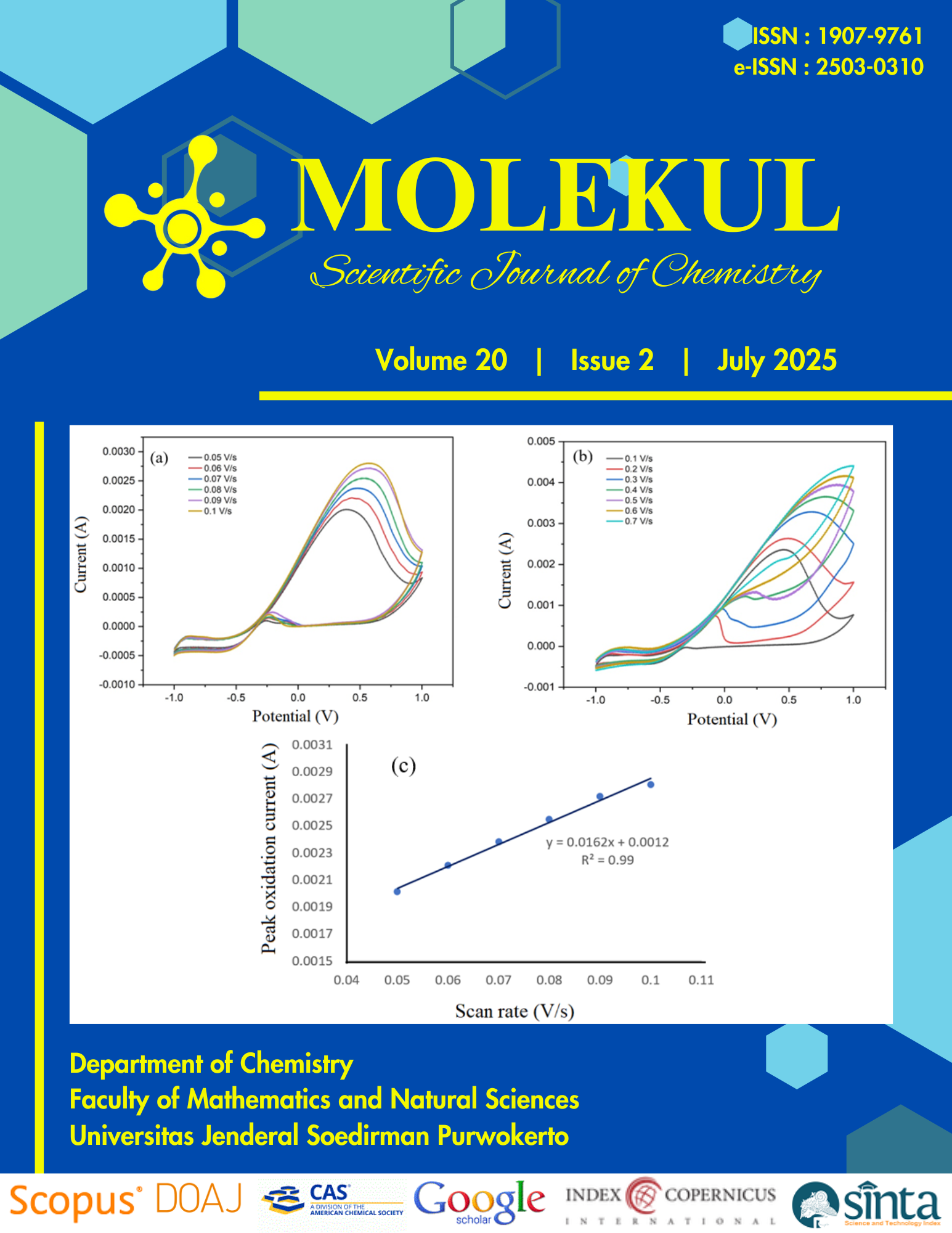Selection of Four Lamiaceae Species (Ocimum americanum L., Ocimum basilicum L., Leucas lavandulifolia Sm., and Perilla frutescens (L.) Britton) as Antioxidant Sources and Metabolite Profile
Abstract
ABSTRACT. The Lamiaceae family which are widely used in traditional medicine in Indonesia. Plants from this family are known to have antioxidant bioactivity. Therefore, in this study, an antioxidant test was carried out first as an initial screening. This study evaluated the antioxidant capacity of four Lamiaceae species: Ocimum americanum L., Ocimum basilicum L., Leucas lavandulifolia Sm., and Perilla frutescens (L.) Britton. The four Lamiaceae species extracts were evaluated for their antioxidant capacity using 2,2-diphenyl-1-picrylhydrazyl (DPPH), cupric-reducing antioxidant capacity (CUPRAC), and ferric-reducing antioxidant power (FRAP). The highest activity extract was fractionated with n-hexane, ethyl acetate, and ethanol-water, and the results were tested for antioxidant capacity. The most active extract and most active fraction were analyzed for metabolites using liquid chromatography-mass spectrometry (LC-MS/MS). The results show that the ethanol 50% leaves extracts of O. americanum L. have the highest antioxidant capacity of about 0.439 (DPPH); 1.517 (CUPRAC); and 1.021 (FRAP) mmol ascorbic acid equivalent (AAE)/g extract. The highest antioxidant capacity from the partition results was possessed by the ethyl acetate fraction with a value of 1.109 (DPPH); 1.540 (CUPRAC); and 1.551 (FRAP) mmol AAE/g fraction. Metabolite analysis using LC-MS/MS succeeded in identifying 18 metabolites consisting of flavonoids, terpenoids, amino acids, phenolic acids, fatty acids, and other carboxylic acids.
Keywords: Antioxidant, Leucas lavandulifolia, Ocimum americanum, Ocimum basilicum, Perilla frutescens
Authors agree with the statements below:
- Authors automatically transfer the copyright to the MOLEKUL journal and grant the journal right of first publication with the work simultaneously licensed under a Creative Commons Attribution 4.0 International License (CC BY 4.0).
- Authors are able to enter into separate permission for the non-exclusive distribution of the journal's published version of the work (e.g., post it to an institutional repository or publish it in a book), with an acknowledgment of its initial publication in this journal.













